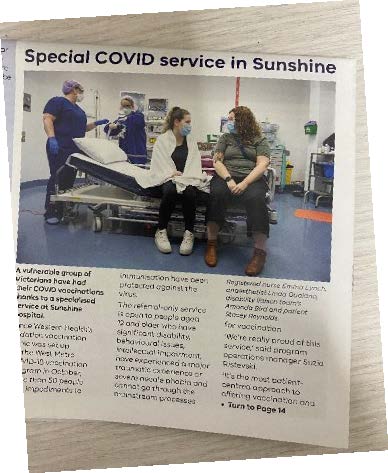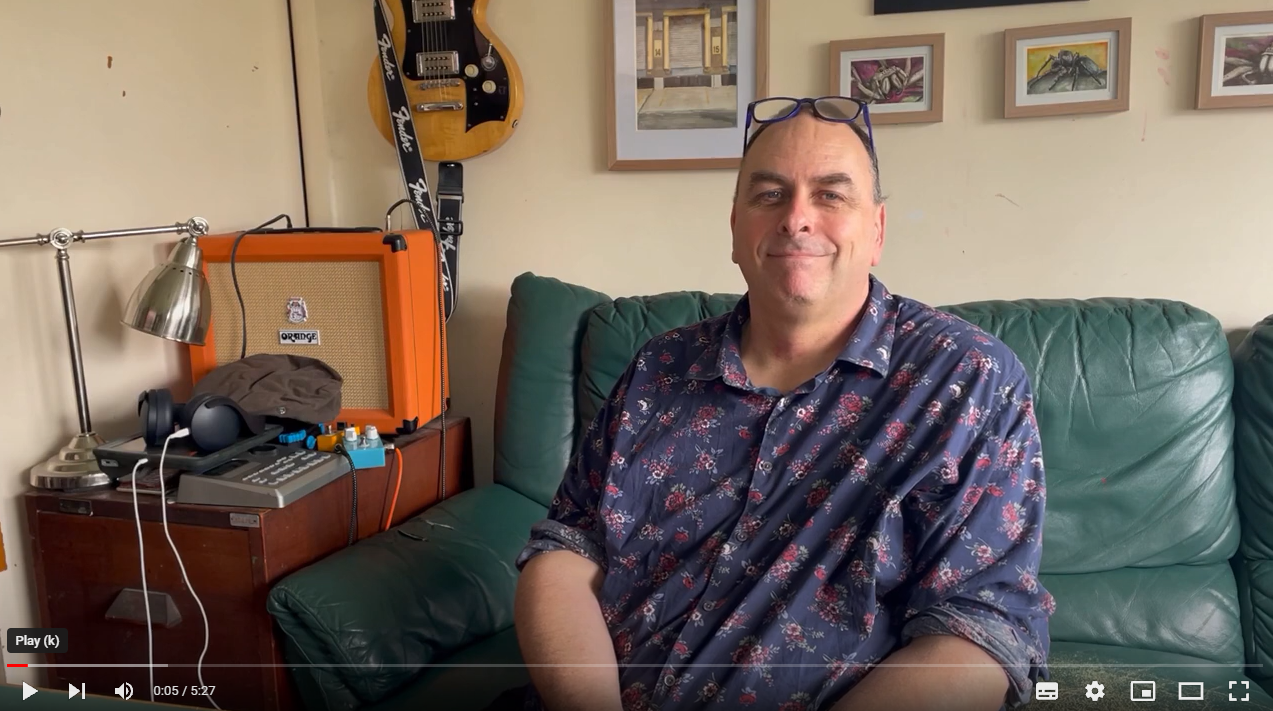-
Key Contacts
For further information on this project, please contact the following staff who were previously part of the West Metro Vaccination Program:
- Alex Potter, Marie Hughes & the Disability Liaison Service
-
Acknowledgements
This was a truly collaborative approach made successful by the determination of the Sunshine Day Procedure team, Anaesthetics Department, Disability Liaison Service, Vaccination Hub staff and nurse immunisors.
Background
2021 saw the worldwide focus on vaccination as the primary approach to reducing the health impacts of the Covid-19 pandemic. People with disability were recognized as a vulnerable community in the pandemic and were at risk of worsening health equity and health outcomes when vaccination became the most effective means of protection. Many people with disability or severe needle phobia would find the vaccination experience either impossible or extremely traumatizing. The Western Health Sedation Vaccination clinic was one of only 2 adult services in Victoria, created to address this significant health equity crisis.
Method
People requiring this specialized service were referred via a number of sources, mostly after failing mainstream vaccination options like vaccination hub or GP services. Referrals required intensive case management style support from the disability liaison officers and anesthetists to ensure they were adequately prepared for the clinic day and then on the day, received the vaccination with as minimal intervention and restraint as possible. This meant some very creative methods for providing sedation in ways that were safe and minimally traumatizing; like in food, drinks or with gas for those who could not receive vaccination without sedation, due to needle phobia or behaviours of concern.

Results
The Sedation Vaccination Clinic ran in Sunshine day procedure unit, one session per week, for 9 months to June 2022. They provided 150 safe vaccinations for over 90 patients.
Outcomes
Whilst measures of how many people received their vaccination successfully are important (99% of the attendees receiving their planned vaccination); the measure of success can be more adequately represented by the patient stories. Families who accommpanied patients spoke of now being able to travel to visit relatives overseas because without the vaccination of their child with a disability, no one could go. Some were also able to cut their child’s nails without physical restraint for the first time in many years; others commented through tears that they could hold their child for the first time in years whilst they awoke from sedation. For those with severe needle phobia it was the difference between losing their jobs, and not. This service was life changing for those who required it, and care was delivered in a safe environment tailored to their needs.
Conclusion
The Sedation Vaccination Clinic was a perfect example of Best Care at Western Health; we got on with it, and didn’t let the complexity of the service requirements deter us from creating a coordinated response tailored to the needs of these patients. Patients received a personalised service, safe for them physically and psychologically, which provided health equity for this group of patients who would have otherwise been disadvantaged by mainstream service delivery methods.
This addresses all 4 components of Best Care, but most significantly Coordinated Care due to the collaboration of many teams to get the job done.



